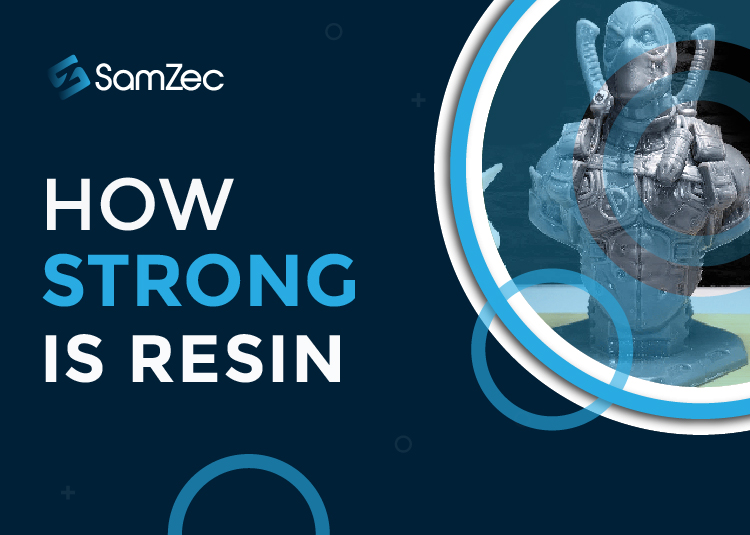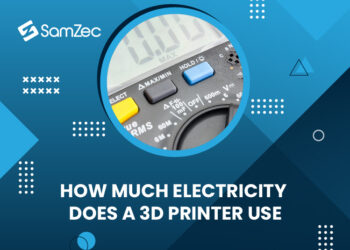Today we all want to save money wherever we can. 3D printing is an amazing way to do that. It allows you to print just what you need when you need it. No longer do you have to buy a whole new part when you just need a small part removed from it. But, how strong is 3d resin? Can I print an HDPE part and be able to use it in a high-stress area of a machine? How strong is 3d resin? Resin is a very strong material. How strong is resin? We’ll give you some idea of the strength of resin.
How strong is epoxy resin?
Epoxy, commonly known as polyepoxide, is a polymer used to make scratch-resistant protective coatings, fillers, and adhesive materials for a number of uses. When in liquid form, epoxy resin is viscous, cures quickly, Wood, metal, glass, concrete, and stone are among the substrates that it adheres to. At its most basic level, epoxy is composed comprised of a liquid epoxy resin and a chemical hardener that cures the compound into hardened plastic. Epoxy is highly strong, dimensionally stable, and chemically resistant once hardened.
Epoxy resins are renowned for their tensile strength and ability to attach to a wide range of surfaces. Based on the resin mix and hardener used, as well as the substance to which it is attached, epoxy has a wide range of bonding power and physical strength. Epoxy resins have tensile strengths ranging from 5,000 to 6,000 pounds per square inch.
Epoxy Resin Characteristics:
Epoxy is a very strong material with a lot of flexural strength. Our 300/21 and 400/21 epoxy resins have a flexural strength of 17,500 psi. Our 300/11 and 400/11 epoxy resins have a flexural strength of 12,800 psi. Epoxy can be stored for an infinite period of time. While we offer a 6-month warranty on our epoxy resins, you can anticipate the epoxy to last at least a few years if properly preserved.
Epoxy resin does not have a cure time that may be changed. The hardener and temperature influence the cure time of the epoxy resin. At 70 degrees F, our 300 resin with 21 hardeners takes 24 hours to cure. At 70 degrees F, our 5 Minute Epoxy cures in 60 minutes. Adding more hardener will not speed up the curing time! If you use too much hardener, the cured epoxy will become rubbery. By enhancing the surrounding temperature around the epoxy resin, you can shorten the cure time. If the temperature is elevated 10 degrees over 70 degrees, the cure time is reduced by 10%. However, do not exceed a temperature of 100 degrees Fahrenheit. How Strong is resin, below are some epoxy resin characteristics?
- Epoxy resin costs somewhat more per gallon than polyester resin.
- Epoxies that are 100 percent solids, such as ours, have low to no VOC. They don’t have much of an odor. Epoxy is non-flammable as well.
- When applied as a thin coating, epoxy cures completely, making it excellent for adhesive applications. When cured, epoxy does not shrink.
- Epoxy is extremely resistant to abrasion, cracking, peeling, corrosion, and chemical and environmental damage.
- Epoxy is moisture-resistant once it has been cured.
- Epoxy is not UV resistant on its own. Some epoxies have a somewhat effective UV-resistant component applied to them. The best technique to prevent your epoxy from yellowing or breaking down due to UV rays is to cover it with clear UV-resistant urethane. The epoxy’s strength and durability will be combined with the urethane’s UV protection.
- Epoxy has a bonding strength of up to 2,000 pounds per square inch. Polyethylene, polypropylene, EPDM, anodized metal, Teflon, and Tedlar are not compatible with epoxy.
How to Use Epoxy Resin
The great bonding strength of epoxy resin makes it difficult to remove clothing, skin, or hair. Furthermore, epoxy resin’s compounds can irritate your skin and lungs. When handling epoxy for any project, it is critical to utilize appropriate protective equipment, such as nitrile gloves, a plastic apron, and safety goggles. Apply epoxy in well-ventilated spaces with open doors and windows to reduce your exposure to epoxy fumes.
If you get epoxy resin on your skin or clothing, use isopropyl alcohol or acetone to remove the uncured substance. Cured epoxy is more difficult to remove off surfaces, but it can be done with paint thinner or adhesive removers. If you get hardened epoxy on your skin, be careful since it might be difficult to remove without causing injury. Although vinegar and acetone nail polish remover will help soften the material, if you are unable to remove it using these procedures, seek medical attention. Epoxy Resin is a very strong glue used to bond various materials. This article helps you to find out how strong is resin and its importance.
Polyester Resin Characteristics:
- Polyester resin is fragile and microcracks easily.
- Polyester resin has a shelf life of 6 months to a year.
- By adding more or less MEKP catalyst, you can change the cure period of polyester resin.
- Polyester resin is typically less expensive than epoxy resin.
- Polyester emits volatile organic compounds (VOCs) and produces powerful, combustible fumes.
- Because polyester resin does not cure properly as a thin layer, it is ineffective as an adhesive.
- When the polyester resin is cured, the larger the pour, the more it shrinks.
- Polyester resin is UV resistant, so it doesn’t need to be top-coated to keep it from yellowing or deteriorating in the sun.
- Polyester resin is water permeable once it has been cured, which means water can eventually pass through it.
- Polyester resin’s bonding strength is typically less than 500 psi.
- Epoxy resin will not attach to polyester resin.
Conclusion:
3D Printing with Resin is an emerging technology that has been around for some time but has only recently become more affordable and accessible to home users. 3D Resin Printing is a term that refers to the process of creating a three-dimensional object with a resin and a 3D Printer. The 3D printer dispenses a layer of resin and then cures the resin with a UV light. This process is repeated over and over again until the object is completed.
There are many different kinds of resin and 3D printers. In this article, we’re going to focus on 3D printing with How Strong is Resin. Strong Resin is a popular resin that is commonly used in 3D printing. It is a resin that is used in conjunction with a specific type of 3D printer called an SLA 3D Printer.




















